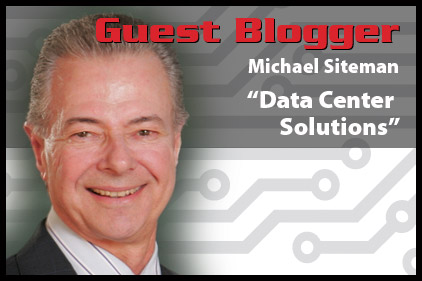It’s been more than 10 years since data center designs moved from N to N+1 and most secondary facilities these days are implemented because the enterprise doesn’t want to build a 2N facility. Why not build two, N+1 facilities when you can do so at half the cost of a 2N facility? Also, there are more reasons motivating the migration from an ‘ad hoc’ office data center/network closet to a purpose-built data center than just virtualization. What I’m saying here is that to argue that any single metric or feature is the overriding driver is pure oversimplification.
Every aspect of efficiency, availability, redundancy, reliability and sustainability should be designed, measured and reviewed including reviewing one’s choice of servers that populate the data center, since that’s the heart of production, the place where heat is generated and power is first used. Planning a data center migration or development should be based on considering all of the key metrics including:
Power Usage Effectiveness (PUE) [total or partial] – the metric that expresses the ratio of the total amount to the amount of power used by the IT equipment. In the case of Partial PUE, the efficiency of components (e.g. container only, cooling system, power delivery) is broken out. PUE is the inverse of
Data Center Infrastructure Efficiency (DCiE)
Energy Reuse Effectiveness (ERE), or Energy Reuse Factor (ERF) – a separate metric based on the ratio between the total energy used minus the reused energy divided by the IT Energy used. It can also be expressed at the sum of the energy used for cooling, power, lighting and IT minus the reused power divided by the IT energy used;
Data Center Compute Effectiveness (DCcE) – This metric aggregates server usage efficiency across all servers in the data center and, similarly to PUE, provides a benchmark against which to improve. DCcE is not a productivity metric. It isn’t meant to measure how much work is done, but rather the proportion of work that is useful;
Carbon Usage Effectiveness (CUE) – The goal of this metric is to maximize the useful work for each unit of Carbon expended. To arrive at the metric, the total Carbon emissions created by the total data center energy used is divided by the IT Equipment load; and
Water Usage Effectiveness (WUE) – In the same way that Carbon usage is measured, so too should the usage and efficiency of water. To arrive at this metric, the annual water usage of the data center is divided by the IT equipment load.
In prior blogs, I’ve written about the business case as a data center driver, noted new technology that is leading toward high-production, low-power usage/low-heat production servers as well as geographic and meteorological factors that need to be considered in the decision-making process. In conclusion, as with other complex businesses, the data center is subject to a vast number of factors should be considered, measured and evaluated in the quest to satisfy continuous operations.
Credits: Much of the information contained in this blog was curated from The Green Grid: http://www.thegreengrid.org. This is a great organization that supports the preservation of natural resources and sustainability in the data center and elsewhere.


Recent Comments
Enterprise Patch Management Policy
Hi Mr. Douglas, I really enjoyed this post....
IT management Support and Services
Modular construction discussion is very important for professional...
Good summary with a couple of questions: At...